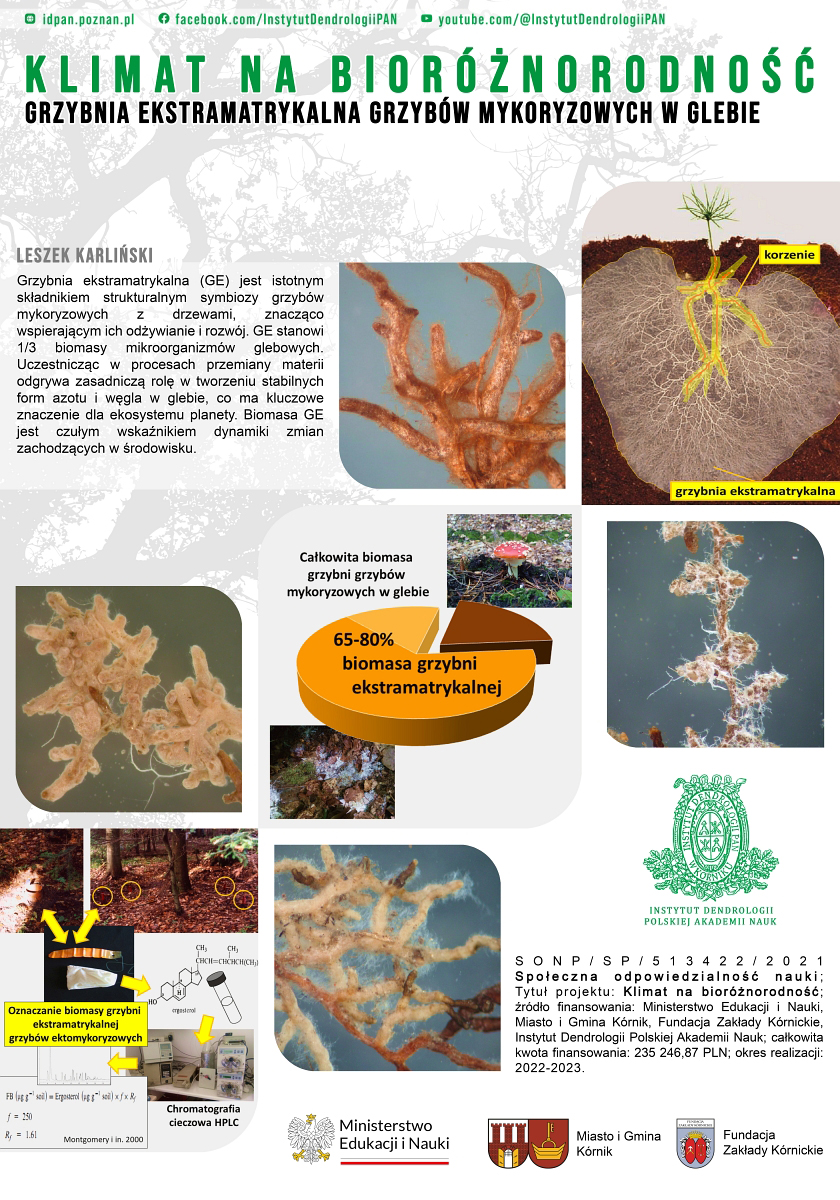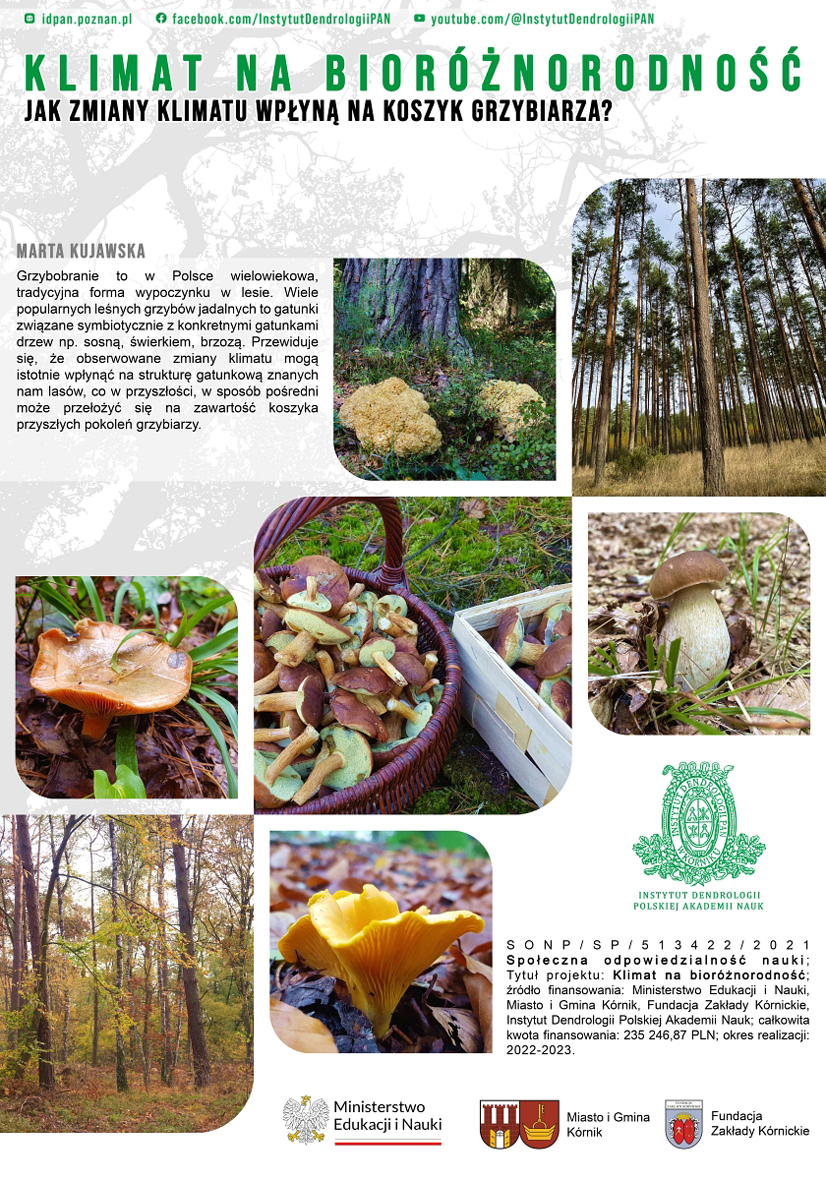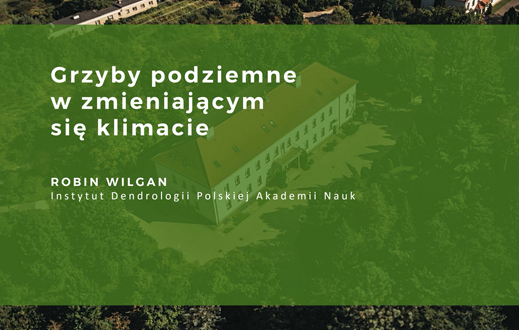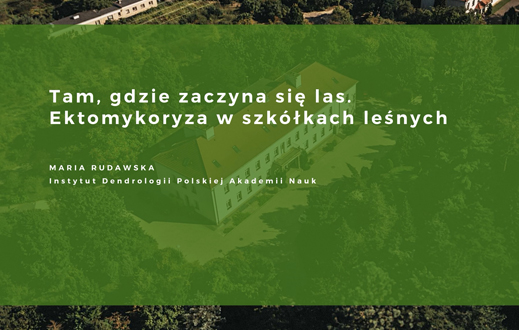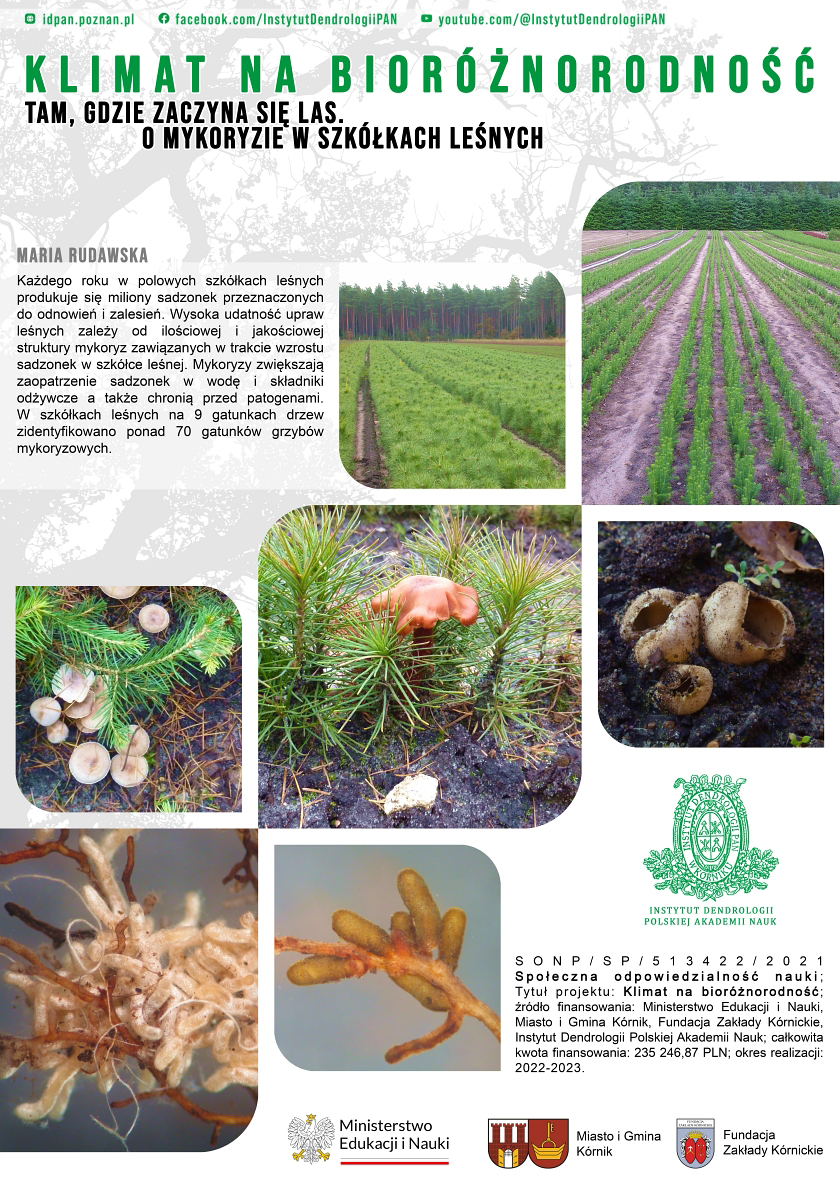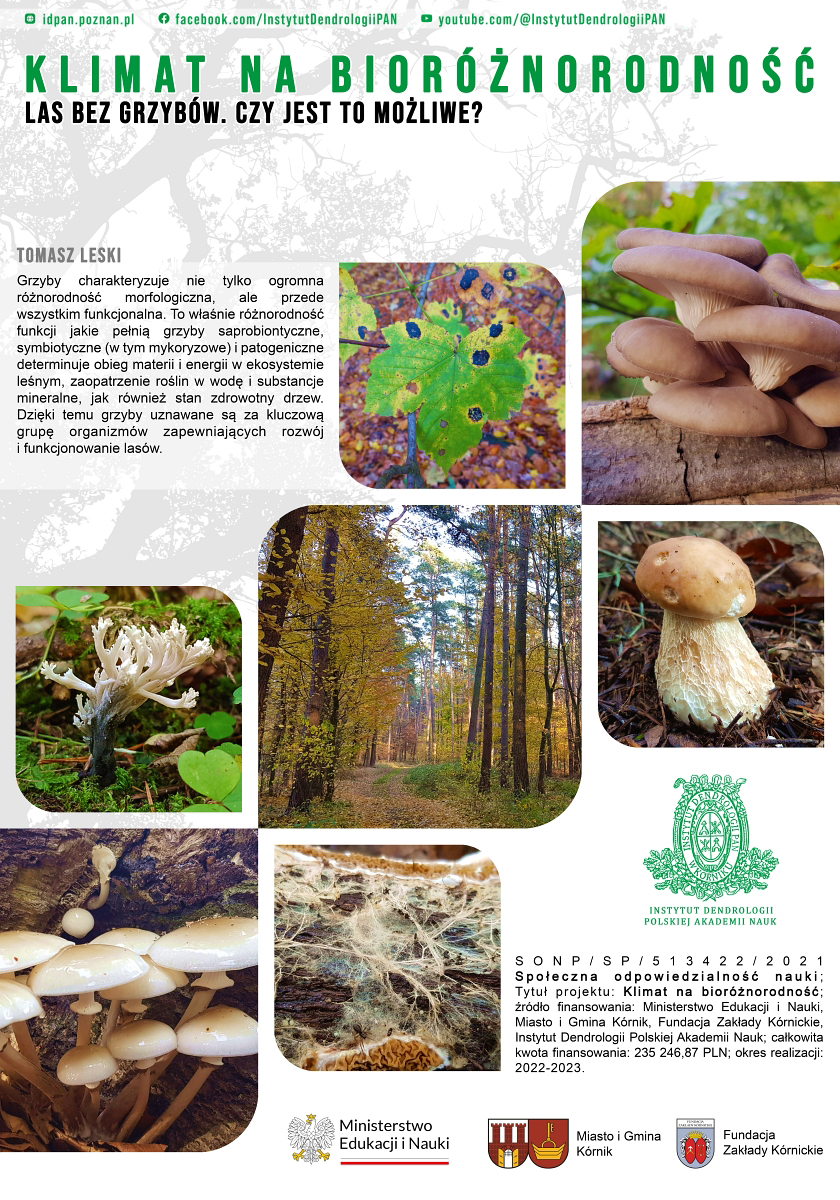We invite you to listen to Dr. Leszek Karliński’s lecture entitled “Extramatrical mycelium of mycorrhizal fungi in soil.”
Extramatrical mycelium (EM) is an important structural component of the symbiosis of mycorrhizal fungi with trees, significantly supporting their nutrition and development. EM accounts for 1/3 of the biomass of soil microorganisms. Participating in metabolic processes, it plays an essential role in the formation of stable forms of nitrogen and carbon in the soil, which is crucial for the Earth’s ecosystem. EM biomass is a sensitive indicator of the dynamics of environmental change.
We invite you to listen to Dr. Marta Kujawska’s lecture entitled “How will climate change affect mushroom picking?”
Mushroom picking is a centuries-old traditional form of forest recreation in Poland. Many popular edible forest mushrooms are symbiotic fungal species related to specific tree species, e.g. pine, spruce, birch. It is predicted that the observed climate change may significantly affect the species structure of the forests we know, which in the future, may indirectly translate into the contents of the basket of future future mushroom pickers.
We invite you to listen to Dr. Robin Wilgan’s lecture entitled "Subterranean fungi and the changing climate."
Climate shapes the distribution of the majority of living organisms, also trees and fungi. Truffles, highly regarded fungi with hypogeous fruitbodies, live in symbiosis with the roots of trees, e.g. oaks, hazel and hornbeam. In Europe, truffles are harvested mainly in the south of the continent, where climate change threaten their future existence. Concurrently, climate change creats suitable conditions for the development of truffles in Central Europe, including Poland.
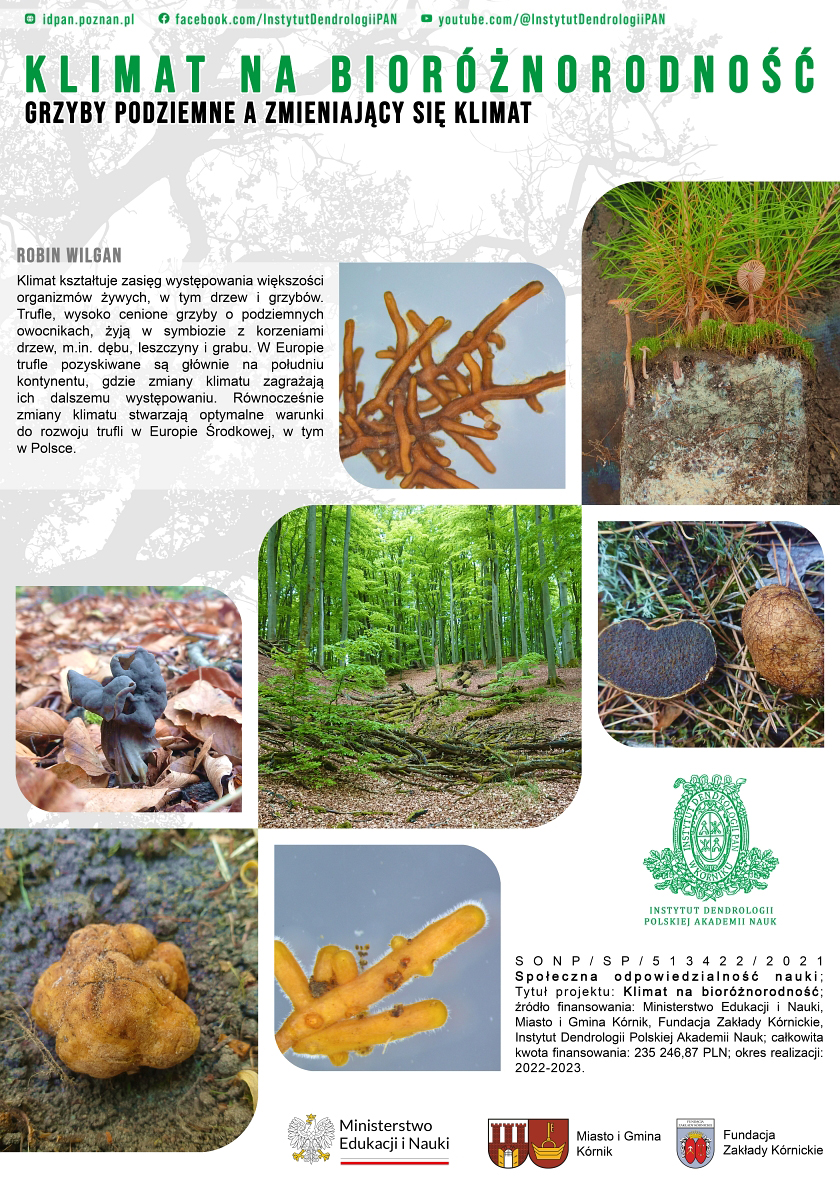
We invite you to listen to Prof. Maria Rudawska’s lecture entitled “Where the forest begins. On mycorrhizae in forest nurseries.”
Every year, field forest nurseries often called bare-root forest nurseries, produce millions of seedlings for reforestation and afforestation. The high success rate of reforestation and afforestation depends on the quantitative and qualitative structure of mycorrhizae set up during the growth of seedlings in the forest nursery. Mycorrhizae increase the supply of water and nutrients to seedlings and also protect them from pathogens. More than 90 species of ectomycorrhizal fungi have been identified on nine tree species in bare-root forest nurseries in Poland.
We invite you to listen to Prof. Tomasz Leski’s lecture entitled “Forest without fungi. Is it possible?”
Fungi are characterized not only by great morphological diversity, but first of all functional diversity. This diversity of functions performed by saprobiontic, symbiotic (including mycorrhizal) and pathogenic fungi determines the flow of matter and energy in the forest ecosystem, provision of water and minerals to plants, as well as the health status of trees. As a result, fungi are considered as a key group of organisms that ensure the development and functioning of forests.












